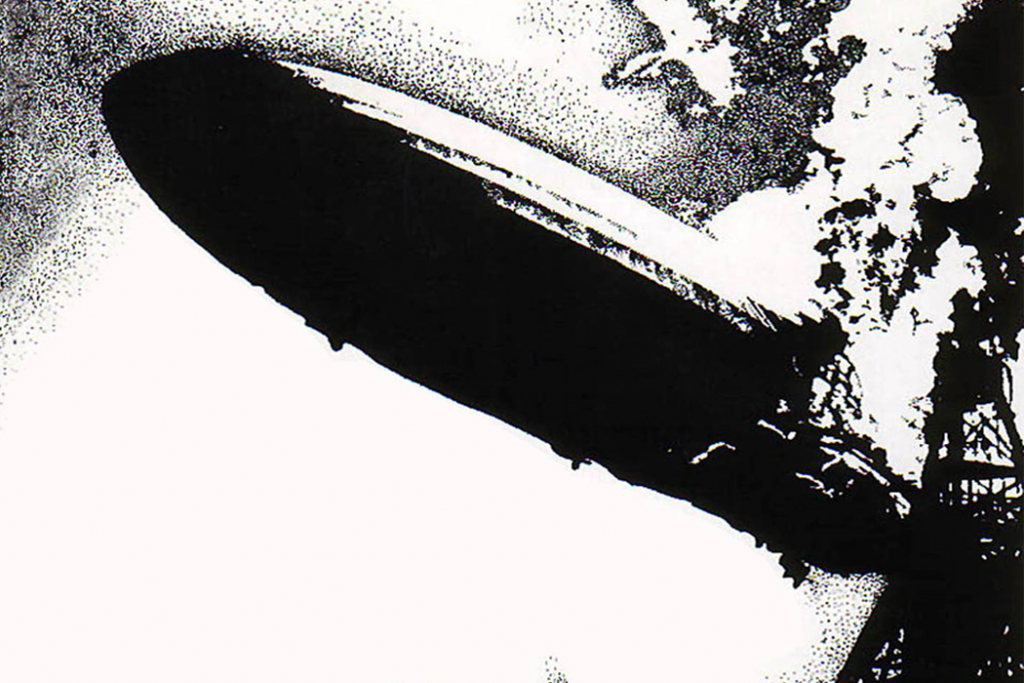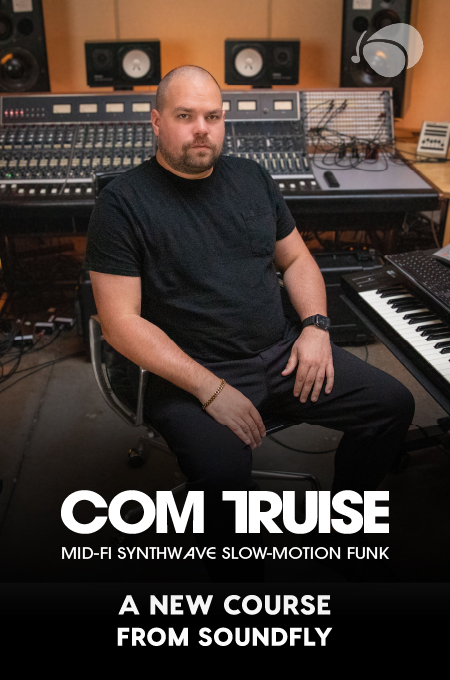+ Our brand new course with The Dillinger Escape Plan’s Ben Weinman teaches how to make a living in music without making sacrifices. Check out The Business of Uncompromising Art, out now exclusively on Soundfly.
What makes a great debut album? Its reflection on its time and place in contemporary society? The hype it generates? An ethereal and indescribable showing of artistic genius and virtuosity?
While there are certainly patterns and similarities within the athenaeum of commercial music — the “sophomore slump,” the “edgy cover artwork,” or the scorched-earth PR campaigns that turn bands into household names before they’ve even struck a chord — there really is no science behind what debut albums become instant classics.
But one thing is true: great debut albums make their own rules and bring something truly unique or singular to the table that can speak to a mass audience.
Let’s examine five of the all-time best and discover what makes each of them tick. And hopefully, as you prepare your great (possibly home-recorded) debut masterpiece, you’ll be able to glean some helpful inspiration!
Weezer — Weezer (The Blue Album) (1994)
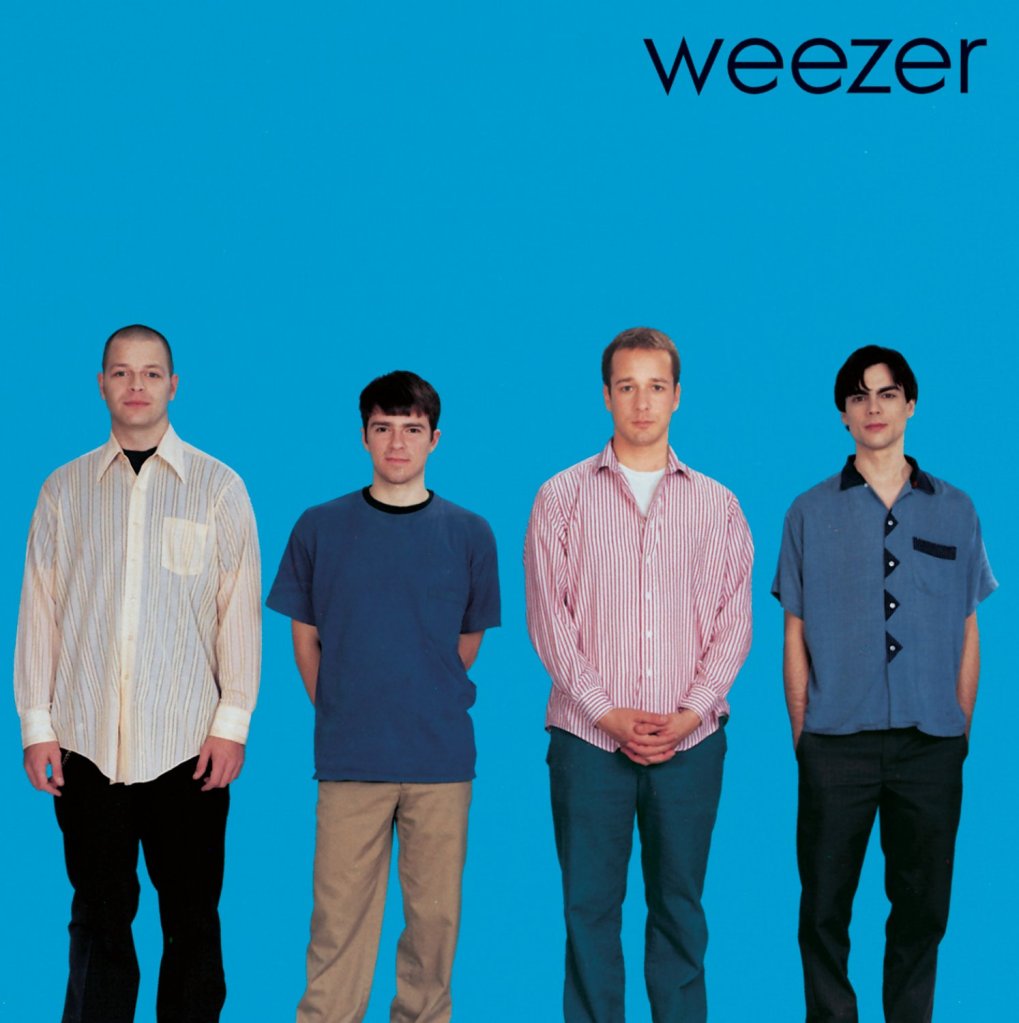
Packed with mega hits (and mega videos for) “Say It Ain’t So,” “Buddy Holly,” and “Undone – The Sweater Song,” Weezer’s self-titled debut record (later dubbed The Blue Album due to its blue cover) is still an alt-radio staple and one of the crown jewels of the ’90s.
Weezer recorded the album fairly early in their career; they formed in 1992 and began production in 1993. The band retains the blithe sensitivity of youth while making strides towards timelessness with genuine syntax and storytelling from singer/guitarist and primary songwriter Rivers Cuomo.
Inspired by the power pop of 1970s bubblegum bands like Cheap Trick and the Raspberries, Weezer packages songs about relationships, alcoholism, and fitting in with the out crowd into four-minute pop marvels with killer melodic hooks that lure listeners.
By the end of each track, the unwieldy subject matter is completely forgotten. It’s an artist’s greatest gift to transmute something harrowing and dark into something truly beautiful.
The band, which initially set out to self-produce their record, chose Ric Ocasek of the Cars¹, after label head David Geffen insisted the band work with a producer. Ocasek creates a distinct sound world on Weezer. It’s no wonder this album made such a powerful impact.
Here, the songcraft and production style live symbiotically. The tight, low-end snarl of the kick drum blends beautifully with the crunchy mid-range guitars. That sound quickly became a hallmark of the indie and alternative rock that followed (like the Strokes’ Is This It? featured later on our list).
Weezer sets themselves apart by their honesty. Not only are all of their songs just so singable it hurts, but every one of them also tells an unequivocal story. It’s a pronouncement from out of the gate that this band will share their whole selves with fans.
Is it this sense of candidness, an introspective introduction from the band to their new fanbase, that which makes this debut album great? Or does the abundance of smash hits help delineate the band’s opening statement that they’re here to stay?
One thing is clear: there are no throwaway tracks on Weezer or any other collection in this list. You can assume that a fully realized album end to end makes a more powerful splash than a collection of singles and fillers packaged primarily to sell.
One other thing that links Weezer’s debut with many other classic debuts, including some on this list, is that it was largely panned upon its initial release. It didn’t receive its cult status nor its critical recognition until later on in the band’s career.
+ Read more on Flypaper: “The True Story Behind Japanese ‘Lawsuit’ Guitars”
Led Zeppelin — Led Zeppelin (1969)
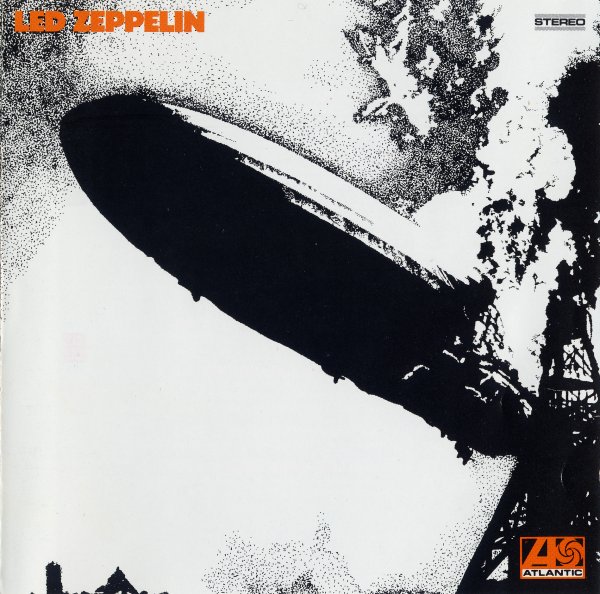
Led Zeppelin ushered in a new era of guitar-driven rock ‘n’ roll with their lightning-charged debut. Within weeks, Zeppelin clones were popping up on both sides of the Atlantic. Deep Purple pretty much immediately changed their sound. Black Sabbath’s Paranoid mirrors many facets of this release verbatim — not to mention the meteoric rise of Grand Funk Railroad in America.
Recorded in an estimated 36 hours on guitarist/producer Jimmy Page’s own dime² at Olympic Studios in London, this record tears through (or rather tears down) Delta blues standards and high octane pop classics like “Communication Breakdown” and “Good Times Bad Times.”
Page demonstrates his command of the guitar with his bowed solo on “Dazed and Confused” and his delicacy and color on acoustic numbers “Black Mountainside” and “Your Time Is Gonna Come.” John Bonham’s thunderous bass drum is accentuated by powerful stabs from virtuosic multi-instrumentalist bassist, John Paul Jones, forming one of history’s greatest rhythm sections.
A single bass drum pedal’s fluttering eighth notes, triplet rolls, the Black Country wail of Robert Plant’s unmistakable lead vocal, and Page’s lawless guitar solos grinding their way out of a Leslie organ speaker are just some of the hallmarks and innovations of rock’s biggest band’s timeless inauguration.
Page and Jones were seasoned session players who spent years in the studio with a pulse on the shifting tides of the industry in the late ’60s. Plant and Bonham, meanwhile, were midland phenoms who hadn’t yet shared their talents with the world. Together, they fused into something that would swiftly topple the Beatles’ reign as top of the pops³ and change music forever.
The band’s timing was nearly as perfect as the music. Led Zeppelin capitalized on the void left by the fracturing of the first wave of modern rock groups: the Beatles broke up, the Rolling Stones were forced into exile after Altamont, and Jimi Hendrix unexpectedly died. The untamed spirits of Jim Morrison and Janis Joplin (who had not yet joined the 27 Club) are present in the music, if not thematically, then in its will to forge onward.
The strongest debuts serve as catalysts to something greater than the music itself. They coincide with turbulence and general hell-raising within accepted social mores and within ourselves. A great debut raises greater questions about the personal connection we make to the music around us and inspires awe at the flashbulb moments that art triggers for us all.
There’s a sense of urgency between the lines of Led Zeppelin’s music — not surprising, considering the band had been together barely a month before entering the studio². While most debut albums’ strengths seemingly derive from years of writing, hard touring, and playing clubs (or these days, spending several years being cold-pressed through the bureaucratic tanglings of a major-label contract), Zeppelin’s secret weapon is the whimsical vitality of a band that hasn’t had time to think about their career or weather the blows of abominable number-crunchers breathing down their necks to create a commercial smash.
They signed to Atlantic (notably not to their rock subsidiary ATCO4) for a then-unprecedented advance of $200,000 ($1,360,180.28 today) and presented the label with their first album ready for release with zero input from the executives. This was completely unheard of for any album, let alone a debut, and might be considered downright idiotic today.
Zeppelin continued on this path their entire career, especially with their second effort, Led Zeppelin II, recorded almost entirely on the road in between ceaseless tour dates4. Led Zeppelin is thoroughly untainted by preconception or prejudice and still a remarkable introduction to the band’s sound 50 years on.
+ Learn more on Soundfly: Our free course, A Conversation with the Blues, explores the roots of American blues music and how its spirit, structure, harmonies, and melodies have influenced the music that grew out of it.
The Strokes — Is This It? (2001)

With Is This It?, the Strokes introduced guitar to the 21st century. During a time when commercial radio was nearly and completely saturated with boy bands, 808 beats, and hi-fi R&B vocal arrangements, Is This It? provided youthful angst with a new punching bag and a bowl of musical chicken soup for all turn-of-the-millennium adolescent wandering souls.
It’s hard to believe that Is This It? is, in fact, a first effort. It’s already leavened with the attributes of a group in their third or fourth album cycle. It captures, with startling perfection, the deep longing and nostalgia that young adults had already begun to feel in their early teens. The blissful ignorance of pool parties, WWF wrestling, and Spice World; the youthful pleasures before the world turned violently upside down on September 11 and wrecked the party.
Here, the Strokes channel desire, lust, pain, and tact observations of modern living into a garage rock opus that continues to reverberate throughout indie and mainstream music culture today.
The drawl of singer Julian Casablancas oozes from the speakers with prosaic wit far beyond his 22 years. You can hear resentment reflective of his privileged upbringing, as if he were the newly minted spokesperson for the old adage, “Money can’t buy happiness.”
The band is the epitome of cool. Swirling mid-range guitars evoke Elvis Costello and Joy Division as the melodies of Albert Hammond Jr. and Nick Valensi corkscrew over the rhythmic foundation provided by drummer Fabrizio Moretti and bassist Nikolai Fraiture.
To bring it all into perspective, Is This It? was recorded in a NYC basement on under 11 tracks, debunking the theory that it takes a large production to make a great record. The lo-fi production value only accentuates the power of the songwriting and sets this record apart as a benchmark for every moody post-grunge garage band and indie songstress.
The album also enjoyed a fair amount of controversy leading up to its release, which helped to cultivate its mythology. Debuting in the US just after the September 11 terrorist attacks on the World Trade Center, the band had to replace the song “New York City Cops” with the newly recorded “When It Started” as track nine, even though the first vinyl pressing retained the original track listing5.
And then there’s the cover artwork, no less subject to controversy. The original cover (pictured above) featured the backside of a nude woman caressed by a black glove, à la Spinal Tap. It was altered to an image of a subatomic particle inside a bubble chamber5 for American retailers and big-box stores due to the potential backlash from conservative groups over its explicit sexuality.
+ Read more on Flypaper: “What Happens When You Mess With the Keys of Iconic Movie Theme Songs?”
Jeff Buckley — Grace (1994)
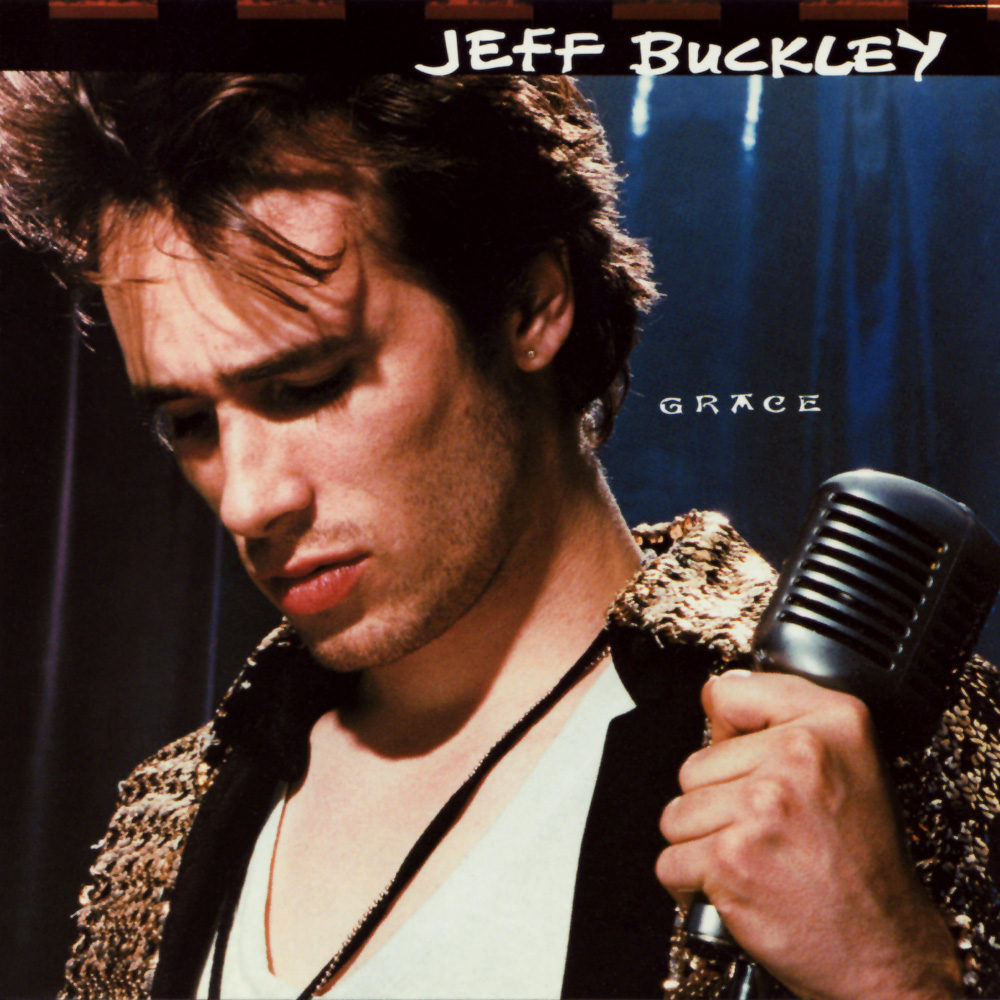
Jeff Buckley died of accidental drowning on May 29, 1997, during a fully clothed, impromptu swim in the Mississippi River. I felt the need to open with that because Grace tremors with fragility from open to close.
Recorded on Columbia Records in 1993 and released the following August, Grace took the singer/songwriter model exemplary of the mid-to-late 1990s to a thoroughly disparate plane. Cumulative of the virtuosity and songcraft garnered from several years of solo performances at Lower Manhattan clubs, you would be hard-pressed to find a more fully realized scrapbook anywhere. The fact that Grace is Buckley’s first (and last) full album of songs only add to its mythos.
Buckley’s voice soars over his accompaniment. Dense melodic blocks and embellishment accent his whirling high tenor, at times lifting off into a nearly transcendental state. It’s difficult to determine which is stronger here, Buckley’s playing or his bellowing voice. Perhaps they coexist; one serves the other in such a way that you cannot stop listening to the avenues connecting the two.
It’s dangerous. I trust Buckley but am feeling as if the entire thing could come tumbling down at any moment. Buckley’s high-soaring lyrical balloon is anchored down by the unbelievable band backing him, providing him with a steady framework to spin his cataclysmic lines of color and breath.
His cover of Leonard Cohen’s “Hallelujah” is the obvious standout, both commercially and in its execution and profound elegance. Accompanied only by his guitar, Buckley’s naked interpretation is a window into his world. And even though he’s inviting us in, it still feels like we’re granted privileged access.
What’s incredible here is the wisdom and sophistication he brings to this debut, which contrasts every one of the other albums we’ve covered so far. Most artists don’t make a record this good throughout their entire careers.
Perhaps this is due in part to Buckley’s fairly advanced age (at least for the music industry) at the time of recording. He was 27, a far cry from the Ariana Grandes and Justin Biebers out there who hit the pop charts in their teens. Buckley earned the right to sing these songs. On Grace, we’re fortunately granted a ticket to ride alongside him.
There isn’t a false chord anywhere on the record, which is no small feat considering that it takes many artists several album cycles to find such a clear, distinct voice.
It wobbles like the Stones but features so much minutiae and breadth that I imagine one could experience the entire spectrum of core human emotion on a first pass. Equal parts swamp rock and bombastic Wagnerian opera, most artists are terrified to produce something this good.
Buckley’s debut leaves us wondering if the virtuoso would have been capable of following it up, although I imagine he would have surprised us all.
+ Learn more on Soundfly: Learn how to record professional sounding albums in your home studio with our free course Demo Recording 101.
Guns N’ Roses — Appetite for Destruction (1987)

Appetite for Destruction is the de-facto, chart-topping, tour-de-force debut album, due in equal parts to its massive commercial success, its unprecedented musical ingenuity, and sadly, the group’s inability to follow it up.
Written mostly while the group was performing the Los Angeles club circuit, Appetite was actually years in the making. The band spent months courting producers, including KISS’ Paul Stanley6, and when the record did come out, it actually didn’t top the chart until nearly a year after its release.
Success finally did come after their Geffen Records A&R rep, Tom Zutaut, made it his personal mission to get their video for “Welcome to the Jungle” played on MTV. Even though it debuted at 4am on the East Coast and played only once (an unusual trial period granted by the station as a favor to David Geffen), MTV’s phone lines blew up with so many calls that they had no choice but to put the video into regular rotation.
Appetite is the only full Guns N’ Roses album with the classic lineup (G N’ R Lies is officially an EP), as the group experienced several personnel changes by the time they tracked their sophomore effort, Use Your Illusion Parts I and II. Perhaps the rawness of this core group is one of the factors contributing to this debut’s status as one of the greats!
Appetite for Destruction exemplifies life as a struggling artist living in mid-1980s Los Angeles. Axl Rose sings, “I wanna watch you bleed” in “Welcome to the Jungle.” From the opening flutters of guitarist Slash’s delayed Les Paul through a Marshall amp stack (does it really get any better than that?) to the uplifting “Beast of Burden”-inspired outro to “Rocket Queen,” Appetite shifts through so many shades of dirt that it transports you from the intoxicating charge of the Sunset Strip to roadside motels and chilly Middle American interstates. Gutter-punk grime and themes of love, abuse, drug use, and poverty are melded masterfully with the epic balladry of “Sweet Child O’ Mine” and the sardonic lift of radio smash “Paradise City.”
Appetite is dangerous. It may be one of the only instances in rock where its extra-curricular activity is more than merely an attention grab or a retroactive attempt to roll with the fast-living users and abusers of rock lore in a VH1: Behind The Music special. It’s every rock ‘n’ roll cliché without ever feeling redundant or stale.
The fact that Guns was even able to make this record is nothing short of a miracle, considering they were already mired in a sea of drug excess before they achieved any kind of remarkable success. The spontaneous wildfire of being young, hungry, and slightly stupid is something worth considering in the question of the great art of the debut album. Can a band capture this much passion and raw energy without collapsing like a supergiant on the verge of nova? Is it possible for a band to produce something as alive as Appetite later in their career?
Or is it only through a first effort, unencumbered by second and third chances, that we’re able to catch a glimpse of the passion and the genius that make a truly spectacular record? In this case, I would argue for the latter.
Appetite was breath of fresh air for rock fans growing tired of the perms and pink guitars of ’80s glam that had catapulted rock to its most tremendous mainstream acclaim and simultaneously destroyed it, paving the way for the alternative explosion in the early ’90s.
Drawing on the rabble rousing aesthetic of ’70s rock giants like Aerosmith, Guns N’ Roses found a way to deliver blow after blow straight to the gut, without compromising commercial integrity. It remains the best-selling debut album of all time.
There are hundreds more brilliant debut albums out there, and we need your help to unearth them all.
Rev Up Your Creative Engines…
Continue your learning with hundreds of lessons on songwriting, mixing, recording and production, composing, beat making, and more on Soundfly, with artist-led courses by Kimbra, RJD2, Com Truise, Kiefer, Ryan Lott, and Ben Weinman’s The Business of Uncompromising Art.
—
Notes
1. Luerssen, John D. (2004). Rivers’ Edge: The Weezer Story. ECW Press. ISBN 1-55022-619-3.
2. Somach, Denny, and Carol Miller. Get the Led Out: How Led Zeppelin Became the Biggest Band in the World. New York: Sterling, 2012.
3. Thomas, Gareth. Led Zeppelin: The Illustrated Biography. New York: Welcome Rain, 2009.
4. Tolinski, Brad. Light and Shade: Conversations with Jimmy Page. London: Virgin, 2012.
5. Roach, Martin. This Is It-: The First Biography of the Strokes. London: Omnibus, 2003.
6. Slash; Bozza, Anthony (2007). Slash. Harper Entertainment. pp. 151–153. ISBN 978-0-00-725775-1.
